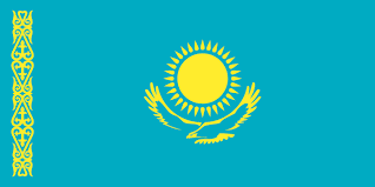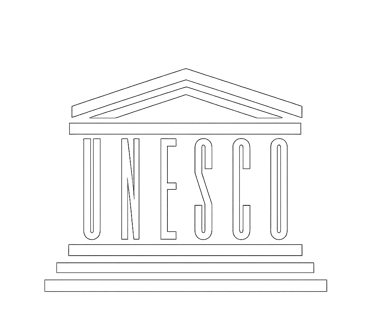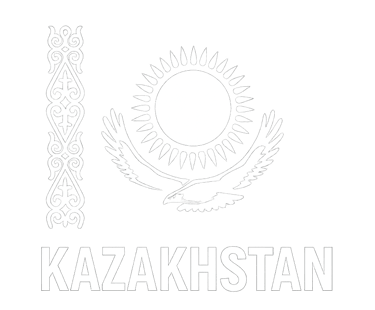KAZAKH KNOWLEDGE
SATISFY YOUR THIRST FOR
UNCOVER THE TRUE KAZAKHSTAN
Kazakh, known as "Қазақ тілі" in its native form, is a language that holds a distinctive place in Central Asia. It belongs to the Turkic language family, setting it apart from the Indo-European languages spoken in much of Europe and neighboring regions.
Kazakh is primarily spoken in Kazakhstan, where it is the official language, but it also has speakers in countries such as China, Russia, Uzbekistan, and Mongolia, as well as in diaspora communities worldwide. With approximately 13 million speakers, Kazakh is one of the most widely spoken Turkic languages.
Unlike its Indo-European neighbors, Kazakh shares linguistic roots with Turkish, Uzbek, and Kyrgyz. However, despite these connections, mutual intelligibility varies due to linguistic divergence over centuries. Kazakh’s distinctiveness is reflected in its vocabulary, grammar, and phonetics, which have evolved independently while incorporating influences from Arabic, Persian, Russian, and Mongolic languages over time.
Kazakh is deeply intertwined with the culture and history of Kazakhstan, serving as a key element in preserving the nation's identity, especially during periods of foreign rule. Of particular significance is its rich oral tradition, including epic poetry such as the "Manas" and the works of renowned poets like Abai Qunanbaiuly, who played a crucial role in shaping modern Kazakh literature.
Here are 5 Unique Features of the Kazakh Language:
Agglutinative Grammar: Kazakh forms words and expresses grammatical relationships through the addition of suffixes. A single Kazakh word can convey what would require an entire phrase in English. For example, the word үйімізде means "in our house."
Vowel Harmony: Kazakh follows vowel harmony, a phonological system where vowels within a word must belong to specific groups—either front or back vowels. This rule ensures a natural and harmonious flow in speech.
Rich Case System: With seven grammatical cases, Kazakh uses suffixes to indicate relationships between words, replacing many prepositions found in English. These cases define functions such as possession, direction, and location.
Flexible Word Order: While Kazakh follows a subject-object-verb (SOV) structure, its word order is flexible and often influenced by emphasis rather than rigid grammatical rules. This allows for dynamic sentence construction.
Pronunciation: Kazakh pronunciation is relatively consistent, with words pronounced as they are spelled. The language features unique letters such as ә, ү, and ң, which contribute to its distinctive phonetic system. Stress generally falls on the last syllable of words.
NATURAL METHOD TO LEARN KAZAKH
Our language courses are based on the Natural Method, also known as the Natural Approach, developed by linguist Stephen Krashen and language educator Tracy Terrell. This approach focuses on creating an environment that mimics how individuals naturally acquire their first language, emphasizing comprehension, communication, and a stress-free learning experience.
While other language courses rely on rote memorization and drills, a heavy academic approach to grammar, repetitive exercises, expensive and time-consuming formal tutoring sessions or ineffective and shallow phone apps, we will have you gradually build your language skills like a child learning his/her mother tongue.
There are essentially 5 Core Principles in the Natural Method:
Comprehensible Input (i+1)
Learners acquire a language when they are exposed to materials slightly beyond their current level of understanding (represented as i+1). By hearing or reading content they mostly understand, learners can gradually internalize new vocabulary and grammar structures.Focus on Communication
The Natural Method prioritizes fluency and the ability to communicate over grammatical perfection. Errors are seen as a natural part of the learning process and are not heavily penalised, reducing anxiety and encouraging learners to express themselves.Emotional Element
Emotional factors like anxiety, motivation and enjoyment greatly influence language acquisition. When learners are in a relaxed state, achieved by removing the anxiety linked to the pressure to produce perfect grammar, it is easier for them to get through the initial phase which is arguably the hardest and where most give up. It is also proven to be easier for the brain to absorb and retain new information if the learner is actually interested in the language and its underlying culture, which is why he have included extensive cultural insights, historical and modern pop culture elements in our language course.Stages of Language Acquisition
Scholars have identified the following stages in the language acquisition process of young children:Pre-production: The "silent period," where learners focus on listening and understanding without speaking.
Early Production: Learners begin using simple words and phrases.
Speech Emergence: Learners can construct longer sentences and express ideas more freely.
Intermediate Fluency: Learners develop more complex language skills and can engage in meaningful conversations.
Advanced Fluency: Learners achieve near-native proficiency.
The goal of our courses is thus to mimic the natural language acquisition process without overwhelming the learner with long and tedious lessons but ensuring gradual gains so that he/she remains committed to his/her fluency goal.
Meaningful Interaction
Instead of rote memorization of single words and grammar rules over and over, the Natural Method encourages activities that involve real-world communication to help retain information. This is why we have included storytelling and role-playing scenarios that simulate everyday situations, with exercises that allow the learner to understand his/her current level and thus improve upon specific elements.
UNCOVER THE TRUE KAZAKHSTAN
Download our complete Kazakh language course to learn Hungarian in 30 days and finally become fluent. Start speaking from the first day!
You will receive not only all the contents available on our website in a convenient pdf or epub formats but also additional contents, including bonus Vocabulary, more Grammar structures and exclusive Cultural insights with additional vocabulary that you won't in any other textbook or Estonian language course.
The additional Vocabulary includes 200 specific topics and more than 15.000 of the most important words. The additional Grammar explanations allow you to create any phrase to express yourself freely while the Culture section contains interesting information that only native Kazakhs would know about politics, history, customs and more!






